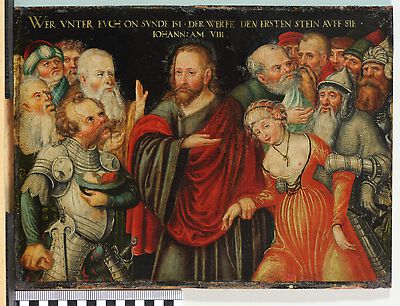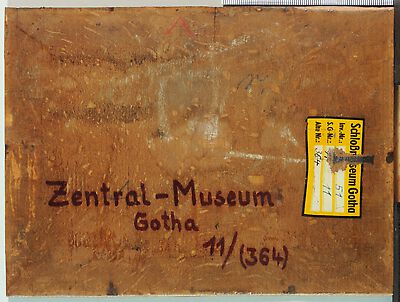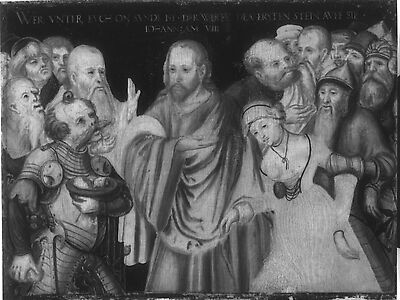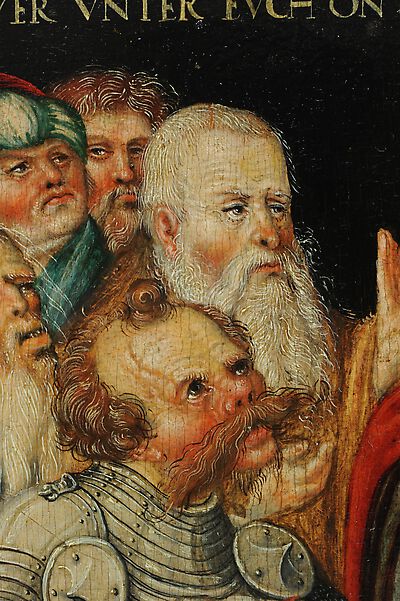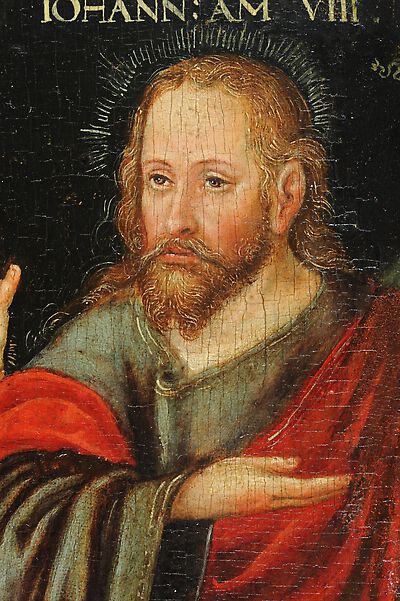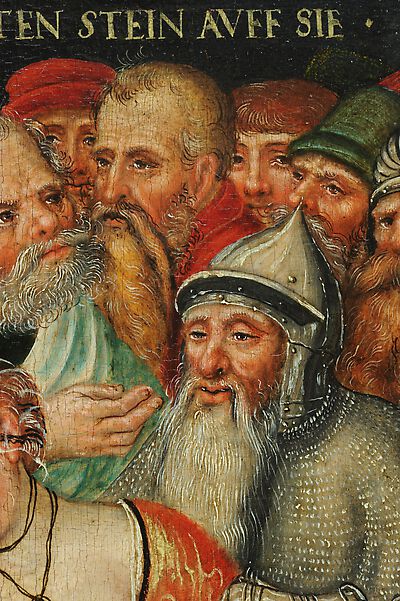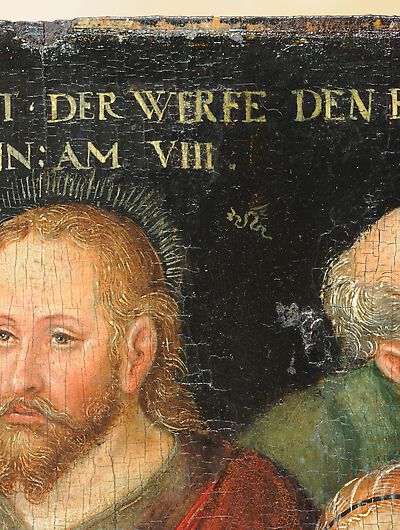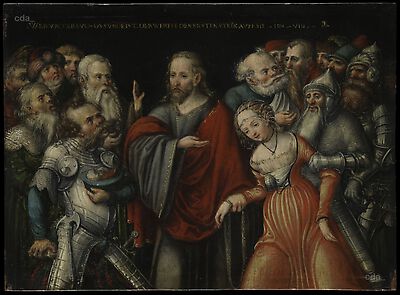- Attributions
-
Workshop Lucas Cranach the Elder
Lucas Cranach the Younger
Attributions
| Workshop Lucas Cranach the Elder | [cda 2010] 'Nach Lucas Cranach der Jüngere' |
| Lucas Cranach the Younger | [Exhib. Cat. Gotha/Kassel 2015, 198] |
| Lucas Cranach the Elder | 'von Lucas Cranachen: ein Original'[1] |
- Production date
- about 1540 - 1550
Production date
| about 1540 - 1550 | [...] '[...] This little painting could not have been produced before about 1545.[Exhib. Cat. Gotha 1994, 53] |
- Dimensions
- Dimensions of support: 14.7 x 19.7 x 0.25 cm
Dimensions
Dimensions of support: 14.7 x 19.7 x 0.25 cm
[cda 2010]
- Signature / Dating
Artist's insignia top centre, to the right of Christ's head (probably later addition): winged serpent, facing left; in yellow paint.
Signature / Dating
Artist's insignia top centre, to the right of Christ's head (probably later addition): winged serpent, facing left; in yellow paint.
- Inscriptions and Labels
- below the top edge:
'WER VNTER EVCH ON SVNDE IST. DER WERFE DEN ERSTEN STEIN AVFF SIE. IOHANN. AM VIII.' …
Inscriptions and Labels
Inscriptions, Badges:
- below the top edge:
'WER VNTER EVCH ON SVNDE IST. DER WERFE DEN ERSTEN STEIN AVFF SIE. IOHANN. AM VIII.'
Stamps, Seals, Labels:
Reverse of the panel: - top, centre:
in red 'A' or 'AL' linked;
- on the right:
in black paint: a horizontal 'i'
[Exhib. Cat. Gotha 1994, 53]
- right side:
printed yellow label: 'Schloßmuseum Gotha/Inv. Nr.:/S.G. Nr.:/Alte Nr.:'; handwritten entry in black: '51'; '11'; '364'.
- bottom centre:
handwritten in red ink: 'Zentral-Museum/Gotha/11/(364)'
- Owner
- Stiftung Schloss Friedenstein, Gotha
- Repository
- Stiftung Schloss Friedenstein, Gotha
- Location
- Gotha
- CDA ID
- DE_SMG_SG11
- FR (1978) Nr.
- FR-none
- Persistent Link
- https://lucascranach.org/en/DE_SMG_SG11/

